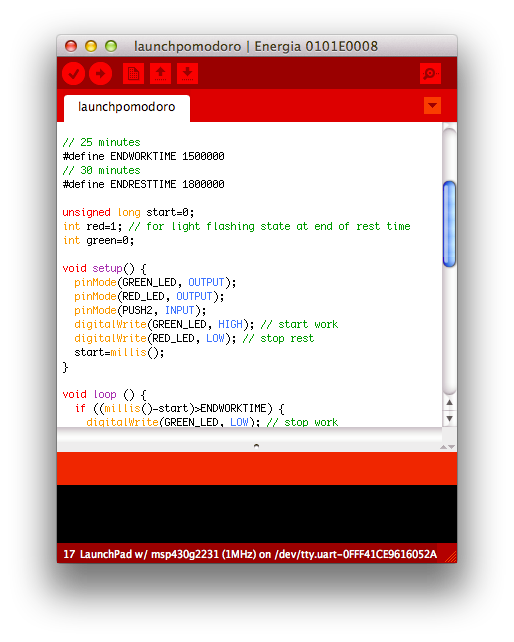I don’t know how many times I’ve written bad Arduino code to call a function every few milliseconds. Sometimes this bad code works well enough for my sketch to actually work. Often, it either doesn’t work at all or does something I really didn’t expect.
So on Arduino Day 2017, I’m glad I found out about bhagman/MillisTimer: A Wiring and Arduino library for working with millis(). It couldn’t be simpler to use: include the library, write the function you want to call every N milliseconds, set up the timer to run every N millis, and put timer.run() in a loop that’s called frequently. The library handles the timing and resetting all by itself.
As an example, here’s the eternal “Hello, World!†of the embedded world, Blink, rewritten to use MillisTimer:
// MillisTimerBlink - blink LED every second
// using Brett Hagman's MillisTimer library
// https://github.com/bhagman/MillisTimer
// (or use Sketch → Include Library → Manage Libraries … to install)
// scruss - 2017-04-01
#include <MillisTimer.h>
MillisTimer timer1; // new empty timer object
const int led_pin = LED_BUILTIN; // use the built-in LED
void flash() { // function called by timer
static boolean output = HIGH;
digitalWrite(led_pin, output); // set LED on or off
output = !output; // toggle variable state High/Low
}
void setup() {
pinMode(led_pin, OUTPUT); // use built-in LED for output
timer1.setInterval(1000); // set timer to trigger every 1000 millis
timer1.expiredHandler(flash); // call flash() function when timer runs out
timer1.setRepeats(0); // repeat forever if set to 0
timer1.start(); // start the timer when the sketch starts
}
void loop() {
timer1.run(); // trigger the timer only if it has run out
// note that run() has to be called more frequently than the timer interval
// or timings will not be accurate
}
Note that MillisTimer only triggers when timer.run() is called. Sticking a delay(2000) in the main loop will cause it to fire far less frequently than the interval you set. So it’s not technically a true periodic timer, but is good enough for most of my purposes. If you want a true interrupt-driven timer, use the MsTimer2 library. It relies on the timer interrupts built into the Arduino hardware, and isn’t quite as easy to use as MillisTimer.
